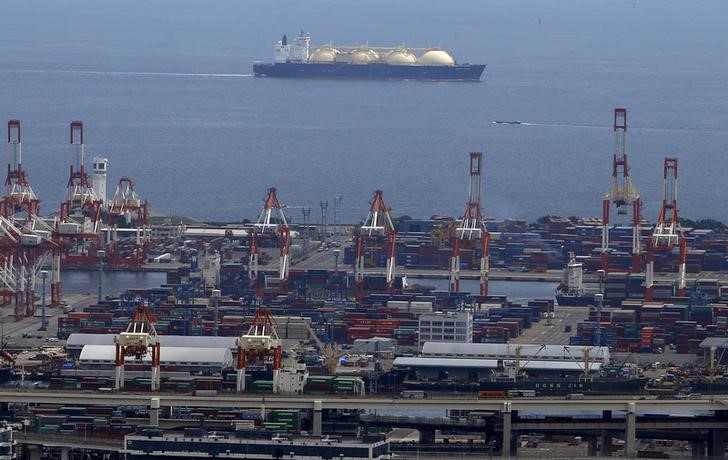Investing.com – U.S. natural gas prices have plunged to their lowest levels in almost four years as lower demand, on the back of warmer conditions, has coincided with surging production. But the worst may now be over.
Natural Gas prices
At 04:50 ET 09:50 (GMT), the benchmark contract traded at $1.70 per million British thermal units, up on the day, but still close to the lowest level since June 2020, when the Covid-19 pandemic severely hit demand.
Why are Natural Gas prices dropping?
Natural gas prices have been hit by a combination of factors.
Firstly, this winter is on course to being the warmest on record, meaning that demand during this crucial period has been hit hard.
Data released earlier this month by the European Union’s climate service showed that global warming has exceeded 1.5 degrees celsius across an entire year for the first time ever.
Secondly, this hit to demand has coincided with surging U.S. gas production, which this month matched December’s record 105 billion cubic feet a day. And supply looks likely to increase going forward.
BP (NYSE:) expects the Calypso deepwater natural gas field off Trinidad and Tobago, which it shares with Woodside Energy (OTC:), to get the greenlight when a final investment decision is made as early as the end of next year.
Additionally, $6 billion overall was spent on natural gas-focused deals last year, adding on to $10.6 billion worth of deals in 2022, as companies looked to expand their operations to meet demand for natural gas as an energy transition fuel.
“U.S. natural gas inventories are likely to exit the winter at an elevated level of 2.2 trillion cubic feet at the end of March,” said analysts at UBS, in a note dated Feb. 19.
“Prices need to stay low to slow down production growth over the coming months. With some producers having hedged their production at higher levels, there is a risk it will take longer to see a slowdown in production growth and prices recovering,” UBS added.
Natural gas price prediction
But the news isn’t all bad.
Last month the Gas Exporting Countries Forum predicted tight global liquefied natural gas markets until 2026 as demand rises 1.5% this year and by up to 22% through 2050.
Kinder Morgan (NYSE:) also predicted a bullish outlook for natural gas demand at the time of its quarterly results last month, with the U.S. energy infrastructure giant citing higher demand from liquefied natural gas export facilities and increased exports to Mexico.
“The future for U.S. natural gas is very bright. And that has positive implications both for our existing business and for our ability to expand,” chief executive Kimberly Dang said during an investor call.
While UBS recommends investors stay on the sidelines for the immediate future, the Swiss bank retained an optimistic outlook for 2025, seeing the natural gas contract trading around the $3.40 per million British thermal units level at the end of this year.
Bank of America Securities tended to agree.
“In our view, weak spot prices improve the risk/reward of positioning for changing U.S. natural gas dynamics that remains a case of when, not if,” BOA analysts said, in a note dated Feb. 20.
On a technical note, the corrective low for the natural gas futures contract to date is $1.52, which matches solid support seen in March and April 2020, and this remains a potential reversal point.
Wednesday’s rally above the previous day’s high of $1.62 provides the first sign of strength that could lead to higher prices, offering hope of a clear change in the recent downtrend pattern.
Beyond Natural Gas: Exploring Opportunities in Clean Energy Stocks
Explore our curated selection of renewable energy stocks and clean energy ETFs today. From leading solar and wind power companies to innovative cleantech firms, our list offers opportunities to invest in the future of sustainable energy.
Read the full article here












